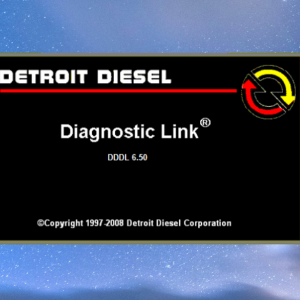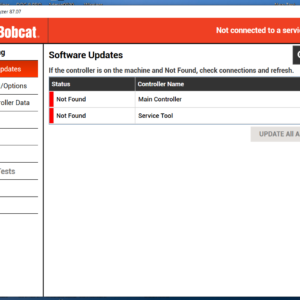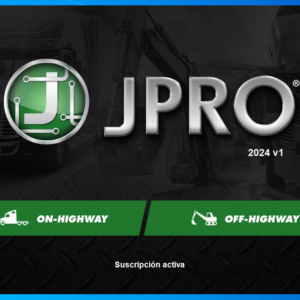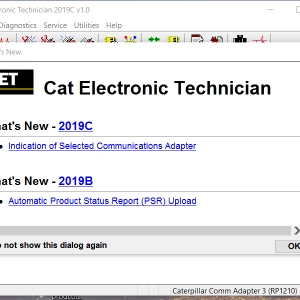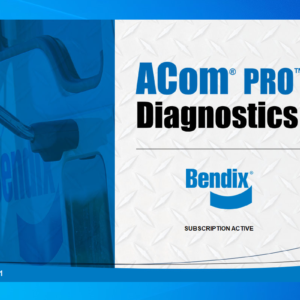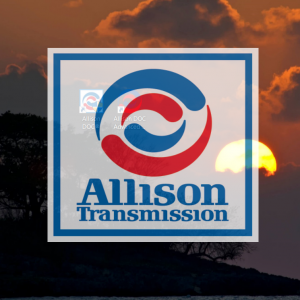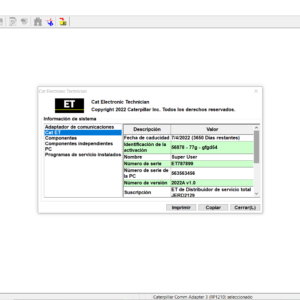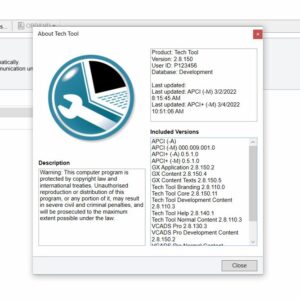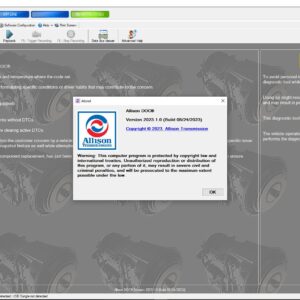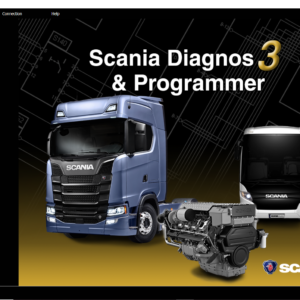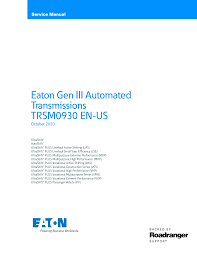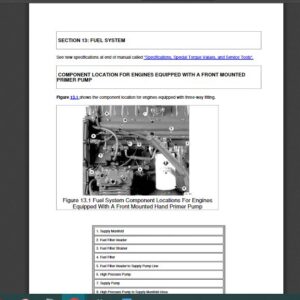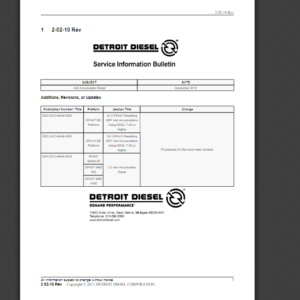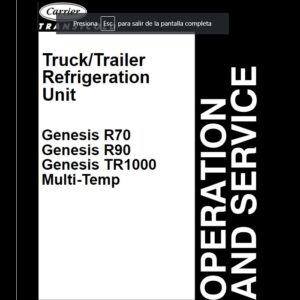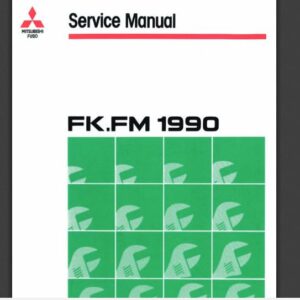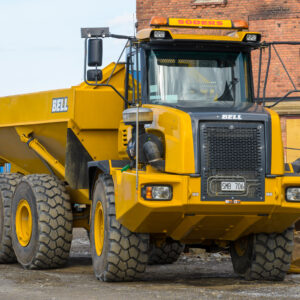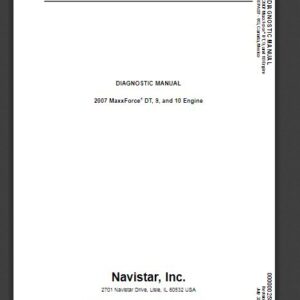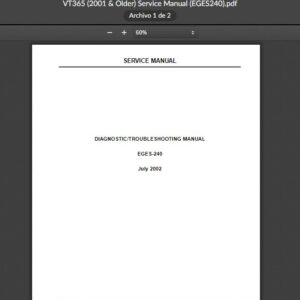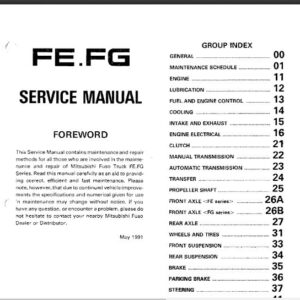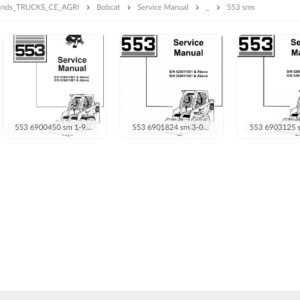Cummins ISX15 CM2250 (2010-12) Fault Code: 1922 (X) PID: SID 324 SPN: 3251 FMI: 0 Aftertreatment Diesel Particulate Filter Differential Pressure- Data Valid But Above Normal Operating Range- Most Severe Level
Circuit Description
The engine aftertreatment system monitors the soot load in the aftertreatment DPF. Under normal operating conditions, the aftertreatment DPF is self-cleaning, where soot is converted to carbon dioxide, nitrogen, and water. Under light load operating conditions, it can be necessary to perform a stationary regeneration of the aftertreatment DPF. The soot load in the aftertreatment DPF is estimated using the aftertreatment differential pressure sensor and the calculated soot output of the engine.
This fault code can be triggered if the application is not operating at a duty cycle high enough to actively regenerate the aftertreatment DPF. This fault code indicates that the exhaust temperatures exiting the turbocharger are not high enough to actively regenerate the soot that is trapped in the aftertreatment DPF. It may be necessary to increase the duty cycle of the application in order to prevent plugging of the aftertreatment DPF.
Component Location
The aftertreatment DPF is located in the exhaust system and is installed by the original equipment manufacturer. Refer to the equipment manufacturer service information.
Conditions for Running the Diagnostics
This diagnostic runs continuously when the engine speed is greater than 500 rpm.
Conditions for Setting the Fault Codes
The engine control module (ECM) detects that the soot load of the aftertreatment DPF has exceeded the maximum operating limits.
Action Taken When the Fault Code is Active
The ECM will illuminate the red STOP ENGINE lamp immediately after the diagnostic fails.
Torque output of the engine will be reduced as the soot load in the aftertreatment DPF increases.
Active and stationary regeneration of the diesel particulate filter is disabled.
The exhaust gas recirculation (EGR) valve will be closed.
Conditions for Clearing the Fault Code
Use INSITE? electronic service tool to perform the Diesel Particulate Filter Reset procedure found under the Aftertreatment Maintenance section of Advanced ECM Data.
After completing a stationary regeneration (as instructed in this fault code troubleshooting tree) and no additional fault codes become active, the repair has been validated.
The ECM will turn off the red STOP ENGINE light immediately after the soot load in the aftertreatment DPF has dropped below the most severe level.
Continue to run the regeneration until the soot load in the aftertreatment DPF has dropped to the normal level.
Shop Talk
Repeated occurrences of this fault code may indicate the engine requires frequent regeneration. Refer to the Aftertreatment Diesel Particulate Filter-Excessive Automatic and/or Stationary Regeneration troubleshooting symptom tree in Section TS to identify the cause of frequent regeneration.
Possible causes of this fault code include:
The aftertreatment wiring harness or the aftertreatment temperature sensor connector pin installation may be incorrect.
The engine has been operating in a light load condition that prevents exhaust temperatures from being high enough to actively regenerate the aftertreatment DPF.
A possible base engine malfunction that causes excessive black soot to be generated.
If both Fault Codes 1921 and 2777 are inactive with an active Fault Code 1922, this indicates that a regeneration inhibit message has been received by the engine ECM and that active regeneration of the aftertreatment DPF was not allowed. Use the equipment manufacturer manuals to confirm that the equipment manufacturer settings for the aftertreatment permit switch are configured correctly.
Excessive ash in the DPF.
The aftertreatment DPF soot loading can be classified into four different stages. As the soot load increases, the aftertreatment DPF lamp and the Cummins? CHECK ENGINE (Amber) or STOP ENGINE (Red) lamp will operate according to the table below. Inadequate temperature for the exhaust gases entering the aftertreatment system can be a cause of high soot loads in the aftertreatment DPF. The duty cycle of the application may need to be increased in order to prevent excessive soot from accumulating in the filter.
Aftertreatment System Soot Stages
Soot Level Stage Cummins? Fault Code Aftertreatment Lamp Status Cummins? Lamp Status Service Procedure Engine Protection Strategy
1 2639 Solid OFF Perform stationary regeneration procedure No engine protection derate
2 2639 Flashing OFF Perform stationary regeneration procedure Mild engine torque derate
3 1921 Flashing Amber Perform stationary regeneration procedure Moderate engine torque and engine speed derate
4 1922 OFF Red Inspect and clean or replace aftertreatment diesel particulate filter Severe engine torque and engine speed derate
Reference the appropriate equipment manufacturer wiring diagram when troubleshooting circuits that utilize wiring supplied by the equipment manufacturer.
For intermittent power supply and data link communication issues with Aftertreatment Components, it is highly recommended that the equipment manufacturer power distribution center fuses and relays be thoroughly checked for loose, missing or intermittent connections.
Possible Cause:
1) ECM calibration
2) Aftertreatment DPF differential pressure sensor failure
3) DPF failure
4)
-
VOLVO PREMIUM TECH TOOL PTT 2.7.116 + APCI 2021 + devtool ( ONLINE )
Trucks software $80.00Rated 0 out of 5 -
premium volvo tech tool update 2.8.150 diagnostic software 1pc
Trucks software $150.00Rated 0 out of 5 -
Scania SDP3 2.48.6 Diagnosis & Programming for VCI 3 VCI3 without Dongle
Scania $30.00Rated 0 out of 5
Related products
-
Allison 1000 & 2000 Gen 4 Fault Codes: P0123 Pedal Position Sensor Circuit High Voltage
1000 & 2000 Gen 4 $50.00Rated 0 out of 5 -
Allison 1000 & 2000 Gen 4 Fault Codes: U1096 J1850 (Class 2) IPC Controller State of Health Failure
1000 & 2000 Gen 4 $50.00Rated 0 out of 5 -
Allison 1000 & 2000 Gen 4 Fault Codes: U2104 CAN Bus Reset Counter Overrun
1000 & 2000 Gen 4 $50.00Rated 0 out of 5 -
Allison 1000 & 2000 Gen 4 Fault Codes: U0032 J1850 (Class 2) Serial Data Communication Link High
1000 & 2000 Gen 4 $50.00Rated 0 out of 5 -
Allison 1000 & 2000 Gen 4 Fault Codes: P0848 Transmission Pressure Switch Solenoid D Circuit High
1000 & 2000 Gen 4 $50.00Rated 0 out of 5 -
Allison 1000 & 2000 Gen 4 Fault Codes: P0870 Transmission Pressure Switch Solenoid E Circuit
1000 & 2000 Gen 4 $50.00Rated 0 out of 5 -
Allison 1000 & 2000 Gen 4 Fault Codes: P0880 TCM Supply Voltage
1000 & 2000 Gen 4 $50.00Rated 0 out of 5 -
Allison 1000 & 2000 Gen 4 Fault Codes: U1000 Class 2 Loss of Serial Data Communication
1000 & 2000 Gen 4 $50.00Rated 0 out of 5 -
Allison 1000 & 2000 Gen 4 Fault Codes: P2773 Torque Control Request Ignored – ECM/TCM
1000 & 2000 Gen 4 $50.00Rated 0 out of 5 -
Allison 1000 & 2000 Gen 4 Fault Codes: P0218 Transmission Fluid Over Temperature Condition
1000 & 2000 Gen 4 $50.00Rated 0 out of 5 -
Allison 1000 & 2000 Gen 4 Fault Codes: P2771 Four-Wheel Drive Switch Circuit
1000 & 2000 Gen 4 $50.00Rated 0 out of 5 -
Allison 1000 & 2000 Gen 4 Fault Codes: U1041 J1850 (Class 2) ABS Controller State of Health Failure
1000 & 2000 Gen 4 $50.00Rated 0 out of 5 -
Allison 1000 & 2000 Gen 4 Fault Codes: U1016 Class 2 J1850 (Class 2) Powertrain Controller State of Health Failure
1000 & 2000 Gen 4 $50.00Rated 0 out of 5 -
Allison 1000 & 2000 Gen 4 Fault Codes: P0871 Transmission Pressure Switch Solenoid E Circuit Stuck Open
1000 & 2000 Gen 4 $50.00Rated 0 out of 5
-
SERVICE MANUAL Eaton Gen III Automated TransmissionsTRSM0930 EN-USOctober 2020
TRUCK MANUALS $24.00Rated 0 out of 5 -
SERVICE MANUAL International Engines DT466 & DT530 (1999-2000) B
INTERNATIONAL ENGINES $29.00Rated 0 out of 5 -
SERVICE MANUAL Carrie Genesis R70 Genesis R90 Genesis TR1000 Multi -Temp
CARRIE $25.00Rated 0 out of 5 -
SERVICE MANUAL International Engines MaxxForce DT 9 10 (2007-2009)
INTERNATIONAL ENGINES $30.00Rated 0 out of 5 -
SERVICE MANUAL INTERNATIONAL ENGINE VT365 (2003 & Older)
INTERNATIONAL ENGINES $24.00Rated 0 out of 5

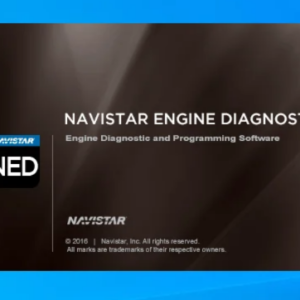

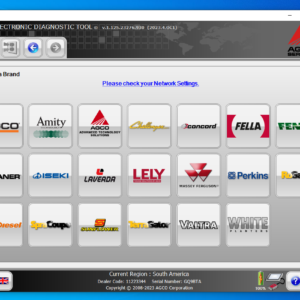


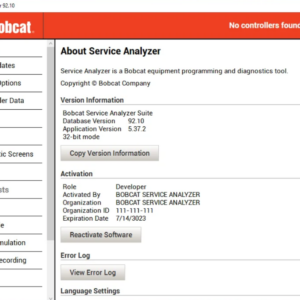
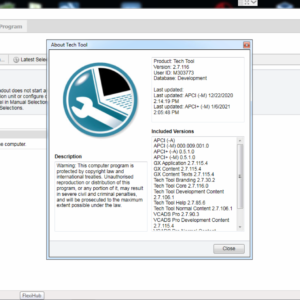
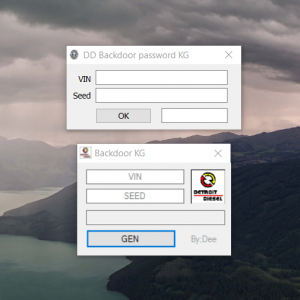
![Volvo Penta EPC 6 Offline VMware [12.2021] VMware](https://www.ecuforcetruck.com/wp-content/uploads/2022/11/VOLVO-PENTA-2021-A-300x300.jpg)
